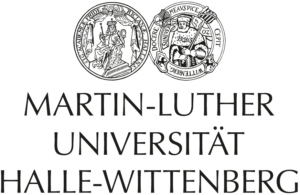Martha Schulz on “Impact of αc-relaxation on Crystallization Process, Morphology and Reorganization Behavior – an Overview of PCL, PEO, POM and PB1″
and Tobias Thalheim on “Compression of Single DNA Molecules in a Thermophoretic Trap”
Location: UL, Linnéstr. 5, SR 532 Time: 3.30pm-5.00pm Link to OpenStreetMap
Abstracts
Impact of αc-relaxation on Crystallization Process, Morphology and Reorganization Behavior – an Overview of PCL, PEO, POM and PB1
Martha Schulz
Depending on the presence or absence of an αC-relaxation it is possible to distinguish between crystal-mobile and crystal-fixed semi-crystalline polymers. Only crystal-mobile polymers own a certain chain mobility in the crystalline phase. In contrast to the crystal-fixed polymer Polycaprolactone (PCL), we analyze the impact of the αC-relaxation for the αC-mobile polymers, Polyethylenoxide (PEO) and Polyoxymethylene (POM), using different methods like SAXS and Flash-/DSC. Furthermore we investigate Polybutylene 1, which switches with a solid-solid phase transformation from a crystal-mobile to a crystal-fixed polymer.
The talk will give a overview about the different influence oft the αC-relaxation on the mentioned polymer systems, which mainly depends on the timescale of the αC-relaxation in contrast to competing processes like crystallization or recrystallization.
Compression of Single DNA Molecules in a Thermophoretic Trap
Tobias Thalheim
The Brownian motion of single DNA molecules, which are suspended in liquid, can be counter-acted by inhomogeneous temperature gradients which are generated by an optically heated metal structure of a thermophoretic trap. The trap [1] relying on thermophoresis, also known as Soret effect, consists of a focused laser beam which rotates on the ring-like metal nano-structure in a continuous fashion thereby generating the inhomogeneous temperature profile which, in turn, induces thermophoretic drift velocities preventing the free fluctuations of the DNA strand. Drift velocities in outer regions of the trap are due to the inhomogeneity of the temperature landscape larger than those closer to the trapping center. An elongated soft molecule like DNA therefore experiences different drift velocities at different parts of the molecule in the trap leading to a compression of the DNA strand which is reflected in a decreased radius of gyration. The influence of the trap on the conformation dynamics of the DNA molecule will be studied with a model-free statistical tool which is called principal-components analysis applied as introduced by Cohen and Moerner [2]. This method decomposes the DNA fluctuations into an orthonormal set of eigenmodes. Investigations of these modes as well as their dynamics yield deviations from the Zimm theory for a polymer chain due to internal hydrodynamic interactions.
References
[1] M. Braun, A. P. Bregulla, K. Günther, M. Mertig, and F. Cichos, Nano Lett 15, 5499–5505 (2015)
[2] A. E. Cohen, and W. E. Moerner, PNAS 104, 12622–12627 (2007)





One thought on “Doctoral students seminar (May 21, 2019)”